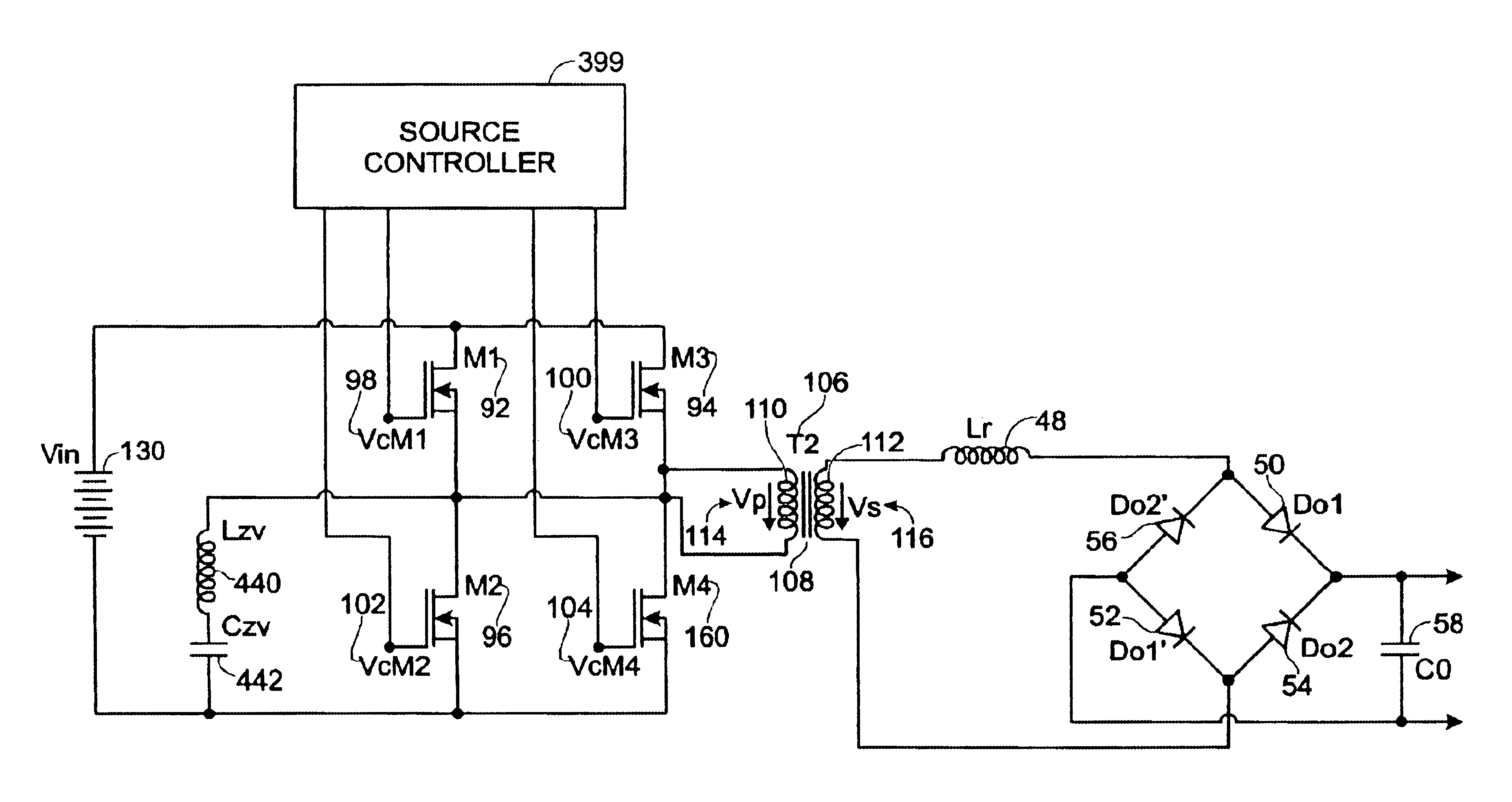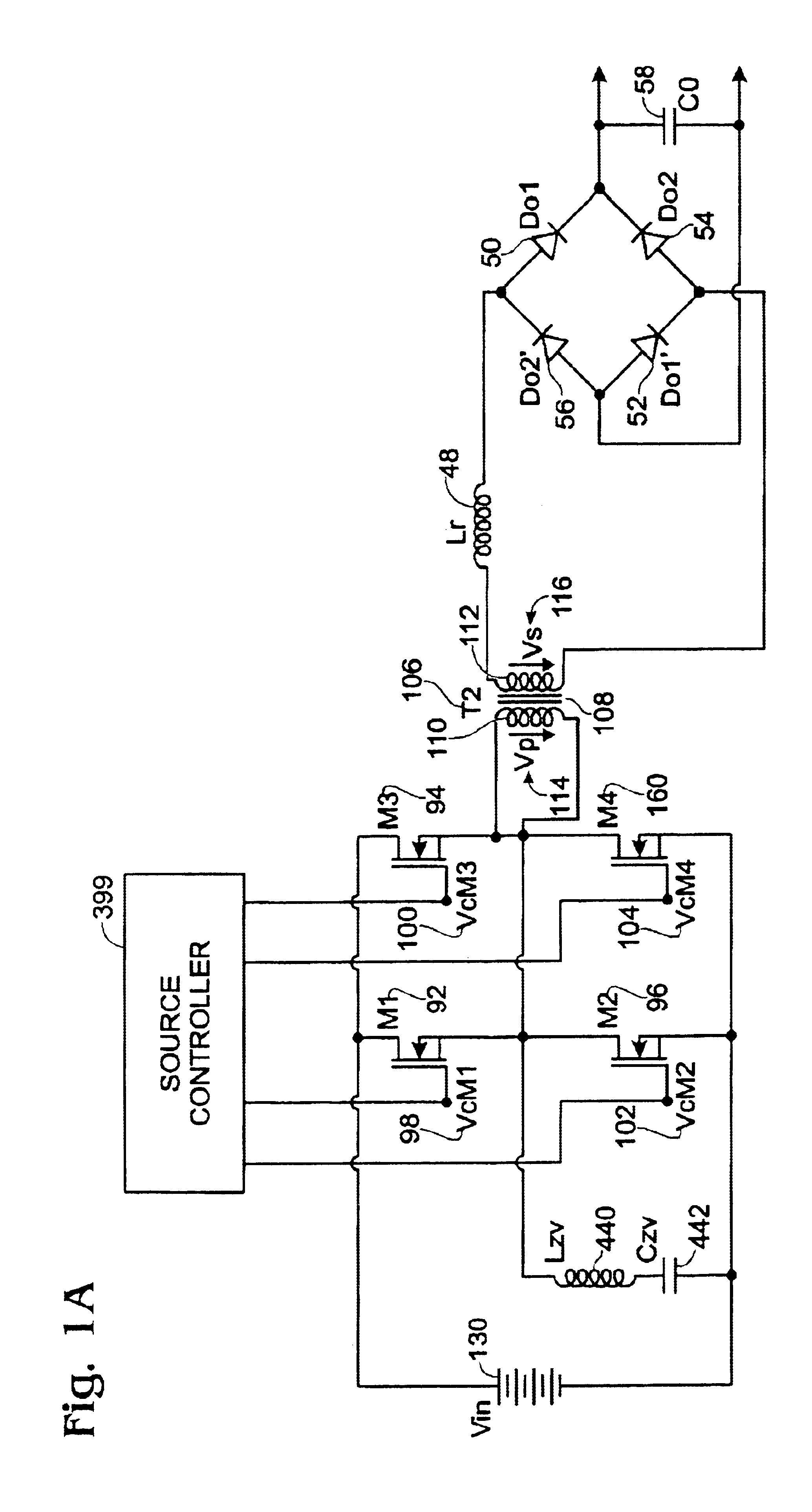Soft transition converter
a converter and soft transition technology, applied in the direction of ac-dc conversion, ac-dc conversion, efficient power electronics conversion, etc., can solve the problems of increasing the level of electromagnetic interference (emi), increasing the switching loss, and reducing the efficiency of high frequency operation, so as to and reduce the loss of reverse recovery
- Summary
- Abstract
- Description
- Claims
- Application Information
AI Technical Summary
Benefits of technology
Problems solved by technology
Method used
Image
Examples
Embodiment Construction
For the AC-DC and DC-DC converters for high voltage application wherein the use of Schottky rectifiers is not possible due to high voltage across the rectifiers, one of the major obstacles is the reverse recovery loss of the rectifiers. The reverse recovery losses are proportional with the current slope through rectifier at turn OFF, the reverse voltage across the rectifier after the rectifier exhibits high impedance, the temperature, frequency of operation and the device characteristics. Additional snubber circuits are often used to reduce the voltage stress on the rectifiers during switching. The frequency of operation has to be also reduced which leads to poor volumetric efficiency of the converters. In FIG. 2 are presented a prior art an AC-DC converter. An AC source drives the primary of the transformer T6, 950. There is inherent leakage inductance in the transformer, which acts as a current source during commutation of the rectifiers 406 and 408. In the right side of the recti...
PUM
 Login to View More
Login to View More Abstract
Description
Claims
Application Information
 Login to View More
Login to View More - R&D
- Intellectual Property
- Life Sciences
- Materials
- Tech Scout
- Unparalleled Data Quality
- Higher Quality Content
- 60% Fewer Hallucinations
Browse by: Latest US Patents, China's latest patents, Technical Efficacy Thesaurus, Application Domain, Technology Topic, Popular Technical Reports.
© 2025 PatSnap. All rights reserved.Legal|Privacy policy|Modern Slavery Act Transparency Statement|Sitemap|About US| Contact US: help@patsnap.com



